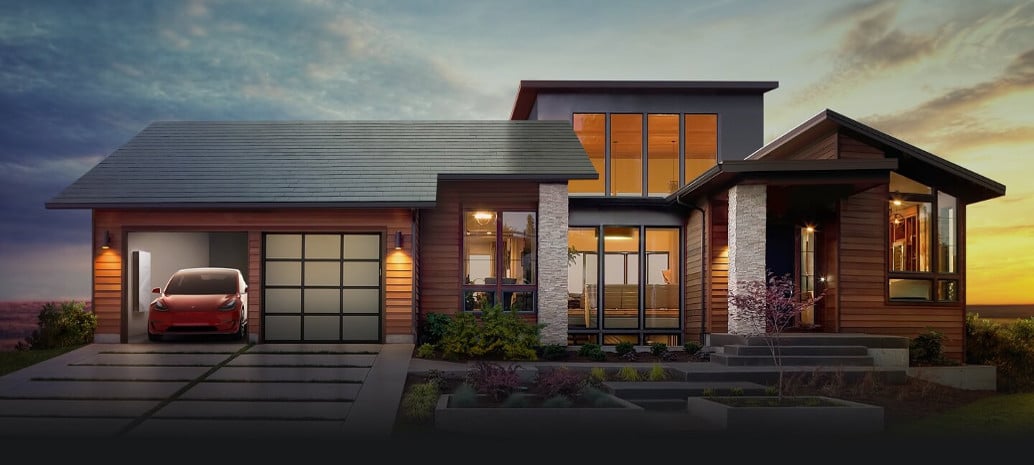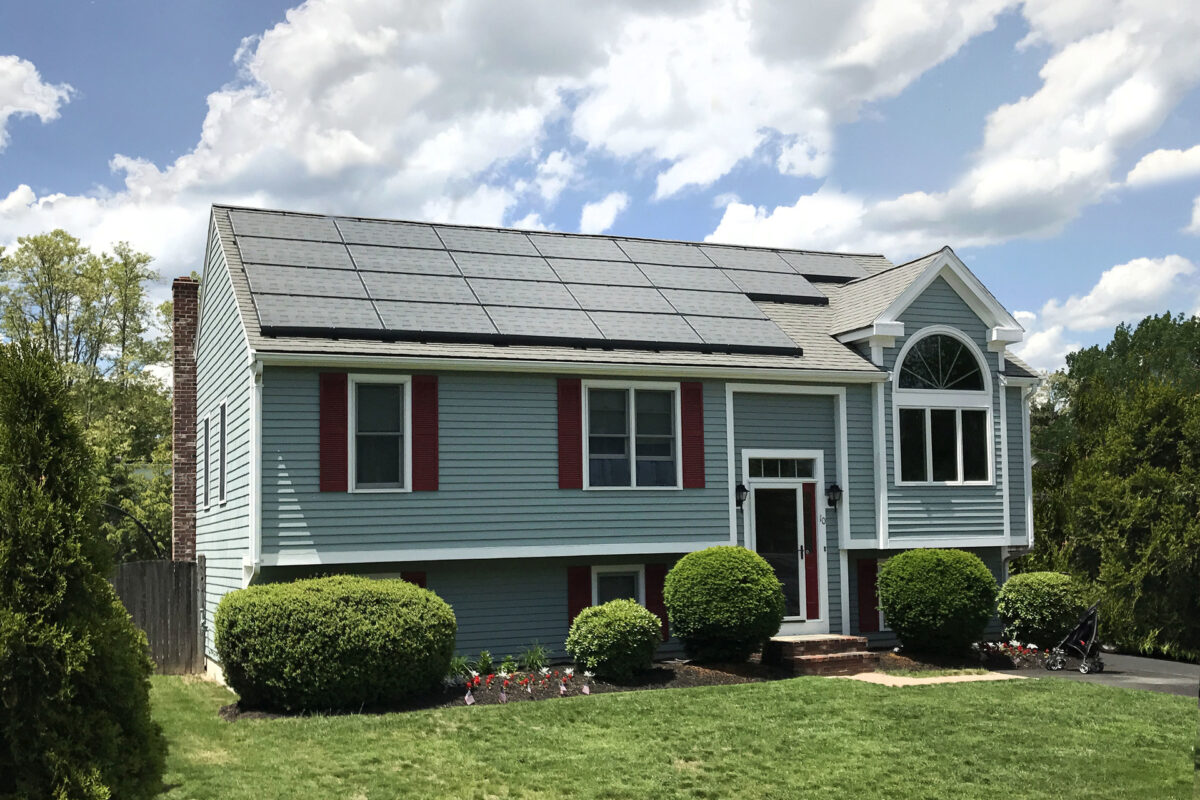Tesla has yet to score a clear victory in the solar space after buying SolarCity two and a half years ago. Following the acquisition, the company’s share of the residential solar market plummeted, with Elon Musk clearly more concerned with profitability than maintaining the growth path that SolarCity was on. A series of changes to its customer acquisition strategy – moving solar sales from door-to-door to Tesla stores, and recently from stores to online – appears to have been a major factor.
But like the magician that he is, Elon Musk always seems to have another card up his sleeve. While Tesla was still in the process of acquiring SolarCity, Musk was talking up his new Solar Roof as a way to reinvent residential solar.
But despite taking orders for more than two years, the Solar Roof product has been painfully slow to roll out. Tesla as always has been secretive about progress, but appears to have begun pilot deployment two years ago, with installations on homes “in the wild” as early as April 2018, and began production of the Solar Roof at the company’s Gigafactory in Upstate New York in January.
And while Musk says that the product is now being installed in eight states, it is not clear exactly how many have been deployed.
A hard sell
Tesla’s Solar Roof comes at the end of a long line of building integrated photovoltaic (BIPV) roofing products which have struggled to establish themselves. The Dow Chemical Company abandoned its Solar Shingle product in 2016, selling the line off to RGS Energy, which despite the market buzz generated by Tesla has also struggled with the product.
In March, RGS announced that it is seeking “strategic alternatives” for the Powerhouse solar shingle product, after being delisted from NASDAQ to the pink sheet OTXQX platform.
Elon Musk’s public analysis during the Solar Roof’s unveiling was that other solar tile products lacked the necessary aesthetics. But while research has shown that homeowners do highly value aesthetics in their choice of solar products, solar roofing tiles have shown themselves to simply be a difficult business to succeed in.
This was alluded to by Musk at the Shareholders Meeting, when he noted the difficulties in making the product durable, low cost and easy to install, and the fact that the company is already on the third version of the product shows that design has indeed been a challenge.
Gigafactory troubles
These comments by Musk are not the only indication that uptake of the Solar Roof has not been as rapid as Musk has anticipated. The Gigafactory in Buffalo that Tesla acquired when it bought out SolarCity was intended to make both the Solar Roof product and regular Panasonic HIT modules for Tesla, but it does not appear to be making much of either.
An investigation into the factory showed that it is widely underutilized, and a subsequent investigation by Reuters in May showed that the “great majority of cells being made at the Gigafactory are being sold in other nations instead of being used in the Solar Roof.
The Gigafactory is the only operational solar cell production facility known to pv magazine operating in the United States, but does not produce merchant cells – only Panasonic’s heterojunction cells for use in Panasonic HIT modules and Tesla Solar Roof products.
This content is protected by copyright and may not be reused. If you want to cooperate with us and would like to reuse some of our content, please contact: editors@pv-magazine.com.









When will you be installing solar in DC?
When will the teslar solar be available in east tenn,
I don’t know. Tesla declined to give any further details, so we don’t even know what eight states Musk is referring to.
Tesla is not the most transparent company in the industry.
I put down a deposit on a Tesla solar roof
Provided all the data and photos
They wrote…we don’t install on metal roofs
Have not received my refund yet
Very Disappointing from a company I really admire
At this time, it appears that the best available PV shingles must be purchased overseas. I am in the market for a roof tile DIY installation on a new structural roof system and am enquiring as to PV Magazines recommendation as to where to acquire the components in the US. Any recommendations would be greatly appreciated.